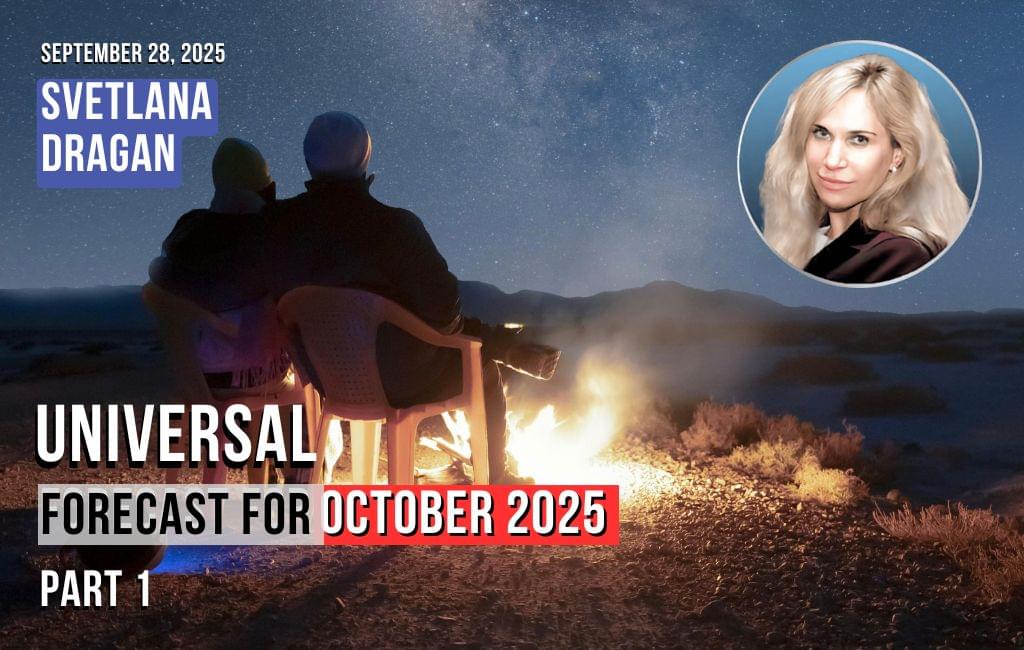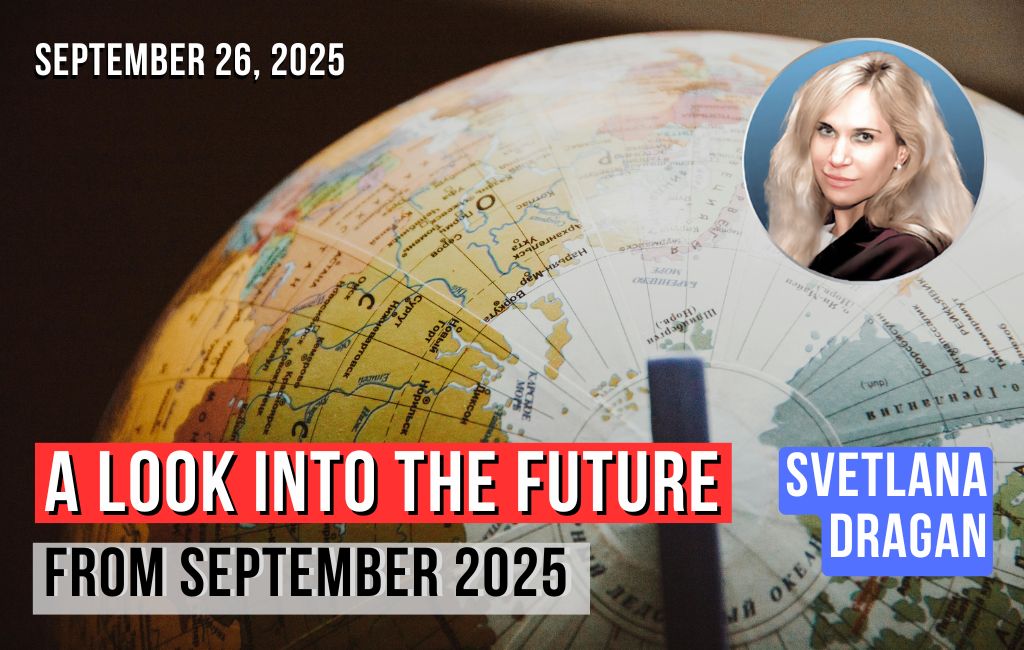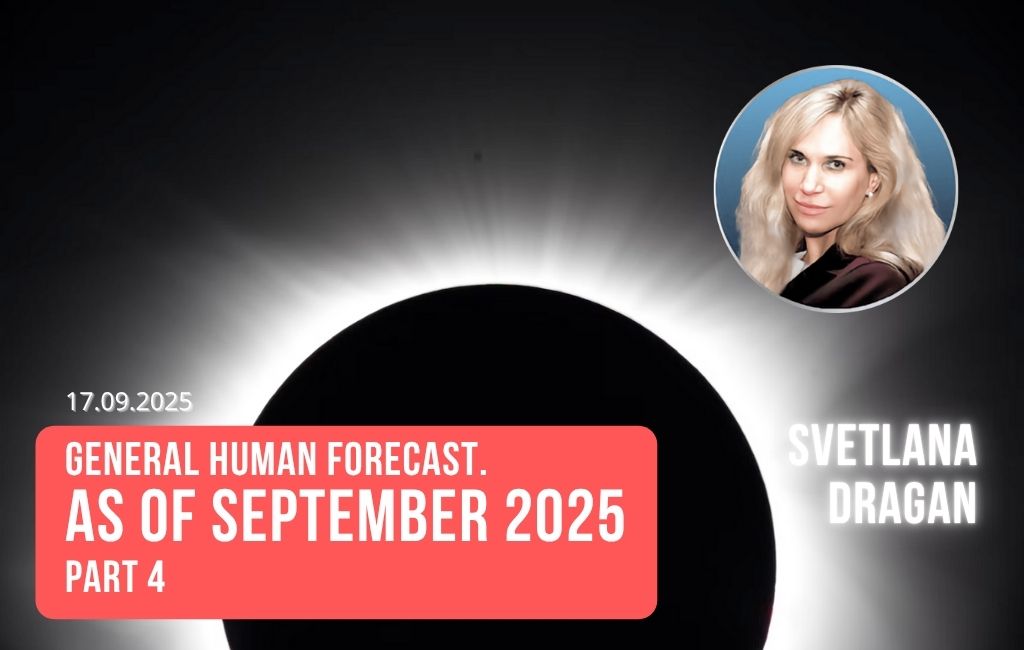An assessment of a particular forecast
In light of the ongoing events, starting from October 7, 2023, of sharp escalation of the Israeli-Palestinian conflict, actually lightning fast bringing it to a state of war deserves serious attention and study, how the situation in Israel was predicted for the foreseeable future at least 4-5 years ago. What processes were the motivation for this sharp outburst of aggressive actions on both sides. In the future, based on these results of the analysis, to predict the future course of events.
The analysis is based on the forecast related to the assessment of events in Israel, which was published by the famous geopolitical astrologer Svetlana Dragan on March 27, 2019.
To understand the interconnectedness of all elements of political, economic, social, military and other components, it should be noted that the basis for determining the time of the forecast took into account the fact that Israel was on the threshold of elections – the most important event for any country, which determines the course of development of the state for several years, and maybe even decades ahead. And in general, 2019 set the tone for a major reassessment of Israel’s position in the global geopolitical frame of reference. That is why the run-up to the upcoming elections looked so hectic and the struggle for leadership in the country was quite acute.
For a better perception of this analysis, initially we will present one or another of S. Dragan’s forecast assessments, followed by a brief analysis of the events related to these forecast assessments.
On predicting the results (course) of the Israeli Knesset elections in 2019
This forecast was given on the eve of a three-year political crisis, which at that time was not known to many people and which was the result of the lack of an authoritative leader of the state, of a unified opinion (majority of votes), of political unity in the Israeli state when choosing its leader, which led the country to the state that it is characterized by now – during the sharp escalation of the Israeli-Palestinian confrontation in October 2023, and which, as everyone knows, has a long and long history of its emergence.
Assessing the general situation in society in Israel for the period of formation of the forecast itself in early 2019 (27.03.19g.) and the possible results of the April elections, S. Dragan notes: … It will be difficult to achieve unity in Israel itself….
The above assessment is subsequently confirmed by the fact that during the election period at the early stage of the crisis (from April 2019) the popular formulation of the main division within the parties and the public was “only not Bibi” (B.Netanyahu’s nickname) or “only Bibi”. In social polls, however, this opinion divided the public almost equally.
This stalemate arose because the liberal wing of parliament refused to form a coalition with Netanyahu, while the Likud party refused to remove him from the party leadership. Neither wing of parliament was able to form a coalition on its own.
A summarized picture of this event (the upcoming Knesset elections) is given by S. Dragan as follows: … It is logical to assume that April will determine the future domestic and foreign policy vector of Israel. Although all the most interesting things will be ahead….
Indeed, “the most interesting” was ahead – during the period of political instability in Israel, when, starting from April 2019 to November 2022, i.e. within more than 3 years were held five special elections to the Knesset: in April 2019, in September 2019, in March 2020, in March 2021 and in November 2022. There was an incredible for Israel political uncertainty in the choice of its leader, which accordingly should determine the ways of further development of the state.
What are the main results of each of the elections held.
The first 2 elections (April and September 2019) did not allow the formation of a governing coalition.
According to the results of the first elections, the two main parties Kahol Lavan and Likud won an equal number of 35 Knesset seats each. B.Netanyahu failed to form a coalition of 61 seats.
The second elections were held in September 2019. According to their results, the two main parties Kahol Lavan and Likud won almost the same number of seats, but Kahol Lavan won only 1 seat more. But even in this case, neither B. Netanyahu nor later Beni Gantzu (leader of Kahol Lavan) were able to form a coalition of the 61 seats required for this purpose.
The third election (March 2020) resulted in the formation of a unity government led by B. Netanyahu and Beni Gantz, which was dissolved in December 2020 due to a failed budget vote. S. Dragan says the following about the temporariness (fragmentation) of being in the leadership of Beni Gantz both during the second election and after the third election: … The White-Blue alliance, in particular Beni Ganz, looks considerably weaker. In general, there is reason to assume that he can be very deceived in his partnership and a little later much will be perceived by him as a betrayal….
The fourth elections in March 2021 brought in a government of disparate parties led by Naftali Bennett and Yair Lapid. It lasted a little over a year and was dissolved in June 2022.About the fact that Yair Lapid’s coming to power is possible, but only not immediately – not in 2019, S.Dragan says this: …The planetary indicators of Yair Lapid, too, do not hint too much at success, at least in the current year (2019)…..
The fifth election in November 2022 ended with the return to power of B. Netanyahu. The success of this phase of the election was foreshadowed by the following words of S.Dragan: …And this assembly point will largely be dictated by historical necessity, more than by anyone’s will. In this sense, the Likud party has a great chance of dominating power, since the liberal currents are most in line with this historical being. And all this despite the fact that B. Netanyahu’s position is not seen as strong. But his associates, especially Gideon Saar, look quite convincing from an astrological point of view….
Interesting and meaningful assessment that S.Dragan gives exactly to the associates.
For example, Gideon Saar. Let us recall that having returned to politics in 2017, he declared his ambitions for the post of Prime Minister. Accordingly, he was also active in politics in the year 2019. Without abandoning his ambitions in December 2020, he left Likud and created and led his own party, New Hope – Unity for Israel.
On what should happen next and consequently on what efforts were required to break the political deadlock, S. Dragan says the following: … It is consolidation that the country will need…. In these issues there can be a reset….. will require an elite that could cope with these tasks….
Thus only after five elections held over 3 years, the 37th Israeli government was formed as a result of political consolidation and a reset of the elite.
Overhauling Israel’s position in the new world order system
The activities of all the political forces involved in resolving the crisis of power during the three-year, ongoing snap elections led to the realization of the need for political stability for the country on the eve of the major upheavals that awaited not only Israel itself, but also the entire pre-2020 world order in general.
S.Dragan notes in his forecast: … It must be said that the current year (2020 )is very important for Israel. The fact is that it sets the tone for a major reassessment of Israel’s position in the global geopolitical frame of reference….
There is hardly a person today who doubts that it was during this period that fundamental geopolitical changes began. We all witnessed how, in fact, from the second half of 2019, and more actively from the beginning of 2020 began the processes associated with the global restructuring of the world order, covid problems that provoked the realization of a not unsuccessful attempt to force all of humanity to accept the conditions of self-restraint and fulfillment of the conditions for building a new world order.
What is the essence and, most importantly, what are the predicted terms of the beginning of this process was told in more detail by S. Dragan in other earlier forecasts, starting from 2015 (see the programs “One Step Ahead”, forecasts and interviews).
Directly concerning the change of Israel’s role in the geopolitical coordinate system in 2019-2020, which was mentioned in S. Dragan’s forecast, we can note the following. In its foreign policy activities, Israel has been following the Trump administration’s lead, and the U.S. has been actively assisting it. The main achievements are the increase of its role in relations with the Middle Eastern countries. It managed to reach agreements with Arab countries – UAE, Bahrain, Sudan, Morocco, further diplomatic steps were planned. All this was carried out with the approval of Saudi Arabia.
Despite its de facto dependence on the United States, in these years Israel began to demonstrate its subjectivity and independence. This was dictated by the fact that with the beginning of a radical change in the world order in that period (2020), the collapse of the economy and the new division of the world, the acquisition of its own large diversified economy and finance, on a large territory with its own resources were considered by the leadership of the country as a vital necessity for Israel.
S.Dragan also emphasizes: … There are serious preconditions for focusing special attention on Israel as an important political player. This state can declare serious political ambitions within a year….
…The whole world will seek to centralize governance and will need religious leverage. Of course Israel, as a special mecca, a center of religious values, will be extremely important. And in a metaphysical sense it is a special territory. And it is not only Israel that understands this, but Trump understands it as well….
Currently, Israel, with the support of the US, continues its territorial policy of consolidating previously captured Palestinian territories in violation of the 1949 agreements on the creation of the two states of Palestine and Israel. While not accepting the creation of Palestine and gradually seizing part of the territories that were intended for the Palestinians, Israel attaches particular importance to the legal entrenchment of territories, including those containing world-famous holy sites.
These holy sites are the objects of constant pilgrimage and tourist visits by people from all over the world. Today, in the context of a serious change in worldview values, including the intensification of the introduction of transhumanism ideas into people’s consciousness, the role of eternal values of a traditional religious nature is significantly increasing.
S.Dragan in his forecast emphasizes the role of the USA in the process under consideration: …The U.S. position will be quite unambiguous and rigid in its political course. … will directly or indirectly contribute to the strengthening of Israel … in the preparation of a new global geopolitical configuration, Israel cannot be detached from some external curatorship. Yes, and the future political stakes for Israel are so high that it cannot be in outright political disconnect…
In terms of increasing its importance as a military power in the region, the defense memorandum: Israel – Saudi Arabia – UAE – Bahrain continues to develop under U.S. auspices. The inclusion of other countries in this memorandum is not excluded. Undoubted support from the U.S. was also evident after October 7, 2023, when prominent U.S. political figures urgently flew to Israel, followed by military aid intended to destroy Palestinian civilians not only in the Gaza Strip, but also in the West Bank of Jordan.
S.Dragan also emphasizes: …a new plot is emerging, where Israel will probably have to sign some agreements and enter into partnership with the US, to become one of the key players in the Middle East configuration….
This plot found its practical confirmation in early 2020. Thus, the U.S. Middle East Settlement Plan (“Deal of the Century”) – the plan of U.S. President D. Trump’s administration for mutual recognition of Palestine and Israel was presented in the presence of Israeli Prime Minister Benjamin Netanyahu in January 2020. B.Netanyahu supported this plan as it is in line with his country’s goals, enhances the country’s role in the field of Middle East politics, with one-sided benefits for them: assertion of Israel’s sovereignty over the Jordan Valley and Jewish settlements in the West Bank; disarmament of Hamas “Islamic Jihad”.
The unacceptability of this plan for Palestine is confirmed by the words of Mahmoud Abbas at the UN Security Council meeting on February 11, 2020, who stated that “Palestine rejects the US plan.” Since this plan assumes that East Jerusalem is no longer under Palestinian sovereignty, as the proposed capital of the Palestinian state will be located in East Jerusalem behind the existing security barrier separating Arab areas, aims to legitimize what is illegal, namely Israeli settlement activities, confiscation and annexation of Palestinian lands.
Even more global predictions are given by S. Dragan regarding Israel’s future foreign policy and military activities: …But, the whole point is that this could be the key to an even steeper geopolitical turn for Israel. …This process may be necessary for a further strategic plan involving territorial and political expansion…There is reason to envision pursuing a conquest strategy….
And these assessments are more in line with what has been going on in the Middle East since 1948 and has not stopped for any significant period of time. This is especially evident after October 7, 2023.
Why, despite the virtually limitless intelligence capabilities of Israel and its Western allies, primarily the U.S., the Palestinians’ preparations for this strike went unnoticed, and the Hamas attack itself took place exactly on this date is difficult to say. Perhaps it is timed to the 50th anniversary of the Doomsday War (1973), or maybe it is the US response to its settlement plan and dictatorial demands for the Palestinians to agree to its provisions within 4 years of its proclamation, namely by the end of 2023. The participation of third forces interested in exacerbating the situation in the Middle East is not excluded. So far it is difficult to say something concrete. Probably a generalized assessment of these events, the reasons for the sharp intensification of the Israeli-Palestinian conflict will have to be given later – after a detailed study of what is happening and what is currently still hidden behind the veil (veil) of geopolitical goals of all participants in these processes.
And in this we may be helped by astrology, which reveals not only future, but also present events, the true causes of which, and most importantly the final goals of certain forces are trying to hide behind a veil of secrecy.
We are waiting for future forecasts of S. Dragan.







